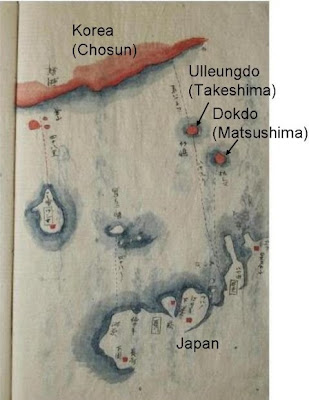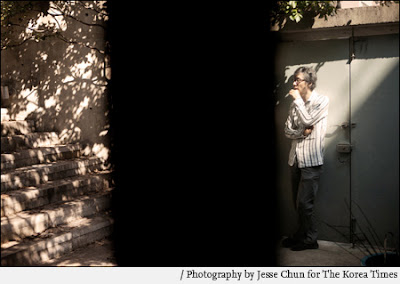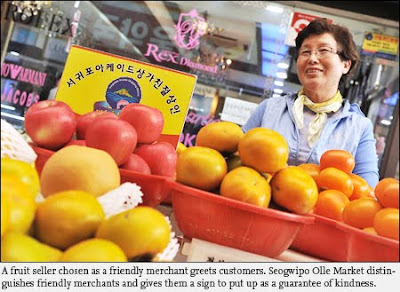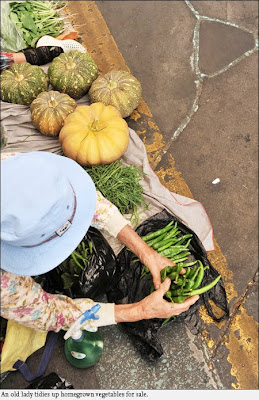
Korean Peninsula, Manchuria brace for three-way competition for 700 years

This is the second of a 10-part series on Korean history from its mythological, ancient beginning until the present day. This project is sponsored by several companies and public agencies including Merck Korea, eBay Korea, Daewoo Securities and Korea Post. ― ED.
After Korea’s earliest state Gojoseon fell in BC 108, three major powers rose up in Manchuria and the Korean Peninsula over the next 100 years to rule the region for much of the first millennium.

Goguryeo took charge of the northern part, while the southern part of the country was divided between Baekje in the west and Silla in the east. This period of three states has become known as the Three-Kingdom Era and marks a period that was rich both spiritually and culturally.
Although the three kingdoms were ruled by different kings in different ways, all of them were composed of ethnic Koreans and they had languages, religions and culture in common.
In particular, all three eventually accepted Buddhism, starting with Gorguryeo, then Baekje, and finally Silla. In addition, Confucianism was also introduced during this era. This also means that Chinese characters were used.
Throughout some 700 years, their rivalry was as dramatic as anything we could expect to find in a movie ― it involved long-term partnerships via marriages, brutal warfare, and betrayals.
For example, the smallest state, Silla, expanded its territory and defeated its two bigger rivals during the 7th century by making an alliance with the Chinese Tang dynasty forces. Silla later drove away its Chinese ally, who thought it would then take Korea over for itself, and instead, Silla established a unified dynasty on the Korean Peninsula.

Goguryeo ― northern defense line
Throughout the Three-Kingdom Era, Goguryeo maintained by far the biggest lands covering much of Manchuria, as well as the northern part of Korea. Initially, it was the most powerful among the three states.
The country’s fortune reached its peak in the 5th century under the rule of one of only two Korean kings who has the title “Great” in his official name: King Gwanggaeto the Great.
King Gwanggaeto expanded his nation northward so as to occupy the Liaodong Plains in Manchuria. There is a big stone stele in northeastern China, which praises his performances, erected by his son.
For the next century Goguryeo was a dominant force, and with its strong military power it set up the northern defense line of Korea under which its southern brothers and sisters could be protected from an invasion by Chinese forces.
During the 7th century the country withstood full-scale attacks from Chinese forces, the most powerful in the world back then. It eventually fell in 668 when Tang forces were united with those of Silla in the South.
From a cultural point of view, Goguryeo had great respect for the teachings of Confucianism and even had its own Confucian academy to train the sons of aristocrats.
Baekje ― mentor of Japan
Baekje was built around the Han River, now modern-day Seoul, by two sons of Goguryeo’s founder. They are recorded as having fled a succession clash and after fleeing south, conquered nearby chiefdoms to take over southwestern Korea including the Han River area.
It was not Goguryeo but Baekje that has stood out first on the peninsula as it was stronger in the 4th century. Back then, the country dominated most of the western part of the peninsula.
However, its fortune waned in the following century with the rise of Goguryeo, and Baekje was forced to move its capital from the Han River area to more southern cities twice. It collapsed in 660 due to the allied attack of Silla and Tang forces.
The nation was famous for having the most advanced religious and artistic culture among the three kingdoms, and it was Koreans from Baekje who were responsible for transmitting Chinese characters, Buddhism, and Confucianism to Japan.
Ajikgi and Wang In are the two Koreans recorded in the earliest Japanese historical records for having brought their superior culture and Chinese writing to the Japanese. Meanwhile, Buddhist missionaries from Baekje brought their religion, as well as their advanced knowledge of art and architecture.
Silla the winner takes all
In the southeast of the peninsula, Silla absorbed nearby city states to become the strongest power there. It was initially the smallest and weakest in the three-way rivalry, and formed an alliance with Baekje in 433 in the face of the threat of Goguryeo.
Strengthened by marriages between royal families of the two countries, the cooperation lasted for 120 years through the mid 6th century.
However, Silla broke the time-honored partnership in 553 by attacking Baekje to take the area surrounding the Han River, which prompted Baekje to join hands with Goguryeo.
In answer, Silla formed an important relationship with the Tang Dynasty to destroy its two rivals in the 660s, and it ousted its Chinese allies out of the peninsula to assume the lands south of Pyongyang.
During the 7th century Korea saw two of its greatest Buddhist philosophers, Wonhyo and Uisang, whose ideas were influential in China. Both emphasized harmony and equality.
In addition, the great Bulguksa Temple (which means ‘the country of Buddha’) was constructed as well as the famous Seokguram Grotto. Both Bulguksa and Seokguram Grotto have been added to the UNESCO World Heritage list.
Korea’s easternmost islets of Dokdo
History books say that Silla conquered Usan-guk in 512, which was based on Ulleungdo in the East Sea. Korean scholars believe that the event made Dokdo belong to the country.
Dokdo is a set of volcanic islets situated in about 90 kilometers east of Ulleung Island where people can see Dokdo with naked eyes when the weather is clear. In contrast, the closest Japanese land is up to 160 kilometers away where Dokdo cannot be observed with human eyes even when the weather is super clear.
It has been under the control of Korea with armed policemen stationed there but Japan claims sovereignty on Dokdo, which the country calls Takeshima, by coming up with various logics.
Dokdo, also dubbed the Liancourt Rocks, has emerged as bone of contentions between the two countries through various events.
Dr. Kevin N. Cawley is currently the Director of the Irish Institute of Korean Studies at University College Cork (UCC), Ireland - the only institute in Ireland dedicated to promoting Korean studies ― funded by the Academy of Korean Studies, South Korea. He was previously a Gyujanggak Fellow at Seoul National University.
In detail
Goguryeo (BC37 AD668):
An ancient Korean kingdom in the northern Korean Peninsula and Manchuria
Baekje (BC18 AD660):
A kingdom in southwest Korea
Silla (BC57 AD935):
A kingdom in southeast Korea
Liaodong Plains:
Plains located in the northeast of China
Pyongyang:
Currently the capital of North Korea. It is located at the heart of the country.
Tang Dynasty (AD618-907):
An imperial dynasty of China, which flourished in terms of cultural capacity and military power.
Han River:
A major river in South Korea flowing through its capital Seoul.
King Gwanggaeto the Great:
The ninth monarch of Goguryeo. Over his reign between 391 and 413, he has expanded territory greatly to make Goguryeo become a super power of East Asia. He died in 413 at the age of 39.
Ajikgi and Wang In:
Scholars of Baekje. They taught the Japanese people the Chinese letters and the Confucianism.
Wonhyo and Uisang:
Buddhist monks and great philosophers of Silla. They were close friends.
Bulguksa Temple:
A big temple built by Silla in its capital. It is enlisted at the UNESCO World Heritage.
Seokguram Grotto:
A hermitage as part of the Bulguksa temple complex. It is added to the UNESCO World Heritage.
Usan-guk:
The country based on Ulleungdo and the nearby islands during the Three-Kingdom Era. Silla occupied it in 512.
Dokdo:
Korea’s easternmost volcanic outcrops. Both Korea and Japan claims Dokdo but Korea has strong grip on it, which is located about 90 kilometers southeast of Korea’s Ulleungdo.
Source: The Korea Times














































